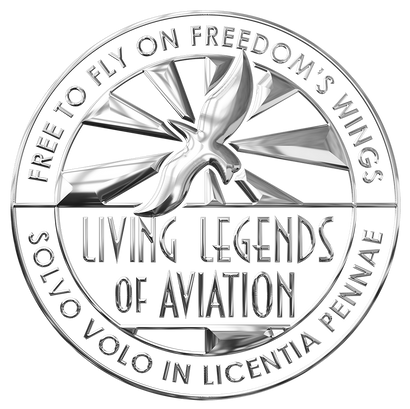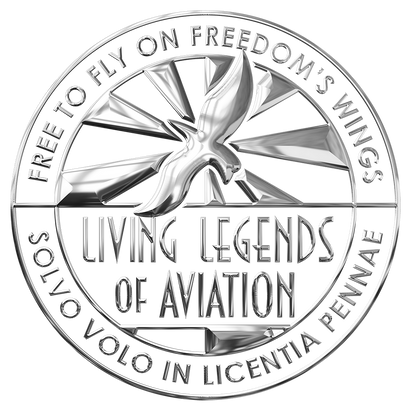MAJOR GENERAL CARL MCNAIR

Carl McNair was born in the state of Florida and was appointed from that state to the United States Military Academy at West Point, New York being admitted as a new cadet on July 3, 1951. Following graduation on June 7, 1955, he was commissioned as an Infantry Second Lieutenant. Lieutenant McNair then attended flight training and Airborne School before serving his initial troop duty with the 82nd Airborne Division (1956-1957). Following the completion of both the Infantry Officer Basic Course and Ranger School, he was next assigned as an aviation advisor to the Second Field Army of the Republic of China in the Military Assistance Advisory Group (MAAG) Taiwan (1957-1959).
Following attendance at the Infantry Officer’s Advanced Course at Fort Benning, Georgia (1961), he obtained a Master of Science degree in Aerospace Engineering from Georgia Tech in 1963. He next served as a Battle Group and Brigade S3, followed by company command with the 1st Cavalry Division along the DMZ in Korea (1963-1964). He then returned to the Pentagon for service with the Air Mobility Division in the Office of the Chief of Research and Development (1964-1967). In 1967, he headed for Vietnam.
McNair’s career in Army Aviation paralleled the increasingly critical role helicopters played in combat. While the Air Force’s bombers and fighters could attack large targets, the Army’s helicopters revolutionized ground combat, especially against highly mobile opponents on the modern battlefield. Helicopters get troops into previously inaccessible places, give them overhead gun cover and evacuate them when needed.
Helicopter warfare reached maturity in Vietnam where McNair served two tours of duty. As a Major, he commanded the 121st Assault Helicopter Company, the "Soc Trang Tigers," an Assault Helicopter Company operating throughout the Mekong Delta. He would next become the S3 of the 164th Combat Aviation Group. Later, when he was promoted to Lieutenant Colonel, he commanded the 145th Combat Aviation Battalion, a battalion of five companies and more than 125 helicopters. Aviation commanding officers didn’t remain on the ground; McNair personally would log over 1,600 hours of combat flying time in Vietnam, frequently flying as many as 15 hours a day (1967-1969).
Returning to the United States in 1969 he attended the Armed Forces Staff College (1969) and following graduation, was assigned to the staff and faculty there (1970). He next attended the Army War College (1971) before serving in the Tactical Department at West Point (1971-1973). He next served at Fort Hood, Texas as the Director, Command, Control, and Communications Testing in Project MASSTER (1973-1974); and then at Fort Rucker, Alabama where he commanded the Army Aviation Troop Brigade (1974-1975), preceding a three-year tour of duty with the Secretariat and the Army Staff—first as Deputy for Aviation to the Assistant Secretary of the Army (R&D) (1975-1977) and then as Executive Officer to the Deputy Chief of Staff for Research, Development and Acquisition (1977-1978).
Carl McNair’s promotion to Brigadier General in 1978 started with an assignment as Deputy Director of Requirements and Army Aviation Officer in the Office of the Deputy Chief of Staff for Operations, Headquarters, Department of the Army (1978-1979). Assigned in 1979 to Fort Rucker, Alabama, McNair served first as Deputy Commanding General (1979) and later as Commanding General of the Army Aviation Center (1980-1983).
By the early 1980s, Army Aviation had grown in size and technological sophistication, causing increasingly complex problems in training, procurement, doctrine development, proponent responsibility, and personnel management. Many non-aviators, as well as aviators, became convinced that these problems could be solved more effectively by the creation of an aviation branch. But this proved to be both an emotional and controversial decision for the Army leadership.
On March 9, 1983, despite opposition, the Chief of Staff Army, General Edward “Shy” Meyer, sent Secretary of the Army John O. Marsh a memorandum recommending that Aviation become a basic branch. Marsh’s subsequent approval officially created the branch on April 13, 1983. McNair had been instrumental in the planning and conception stage and now headed up the new branch. This decision to create an official Army Aviation Branch independent of other Army branches now made it possible for aviators to have a real career progression with assignments offering a wider variety of combat tasks.
Following this key assignment, Major General McNair was next assigned to the Training and Doctrine Command (TRADOC) where he first served as Deputy Chief of Staff for Combat Developments (1983-1985) and later as Chief of Staff, TRADOC (1985-1987). His retirement from the Army in 1987 as a Major General ended 32 years of distinguished service.
By the end of his career, Army Aviation had earned recognition as an indispensable element in the combined arms team, becoming a full-fledged combat arms branch with a Combat Aviation Brigade serving in all Army Divisions. In 2004, he was inducted into the Army Aviation Hall of Fame. A former Army Chief of Staff aptly described his career this way: “He has led American soldiers with courage and commitment in both peace and war, and was repeatedly cited for his valor in combat against the enemies of our nation.”
Following retirement from military service, he immediately immersed himself in the private sector, holding challenging leadership positions with Burdeshaw Associates, DynCorp, and later Computer Sciences Corporation. As a current member of the Board of Directors of Air Methods Corporation, the nation’s largest provider of air medical emergency transport services and systems, he provides valuable advice and strategic insights on the best use of helicopters in the critical field of aero-medical evacuation. He also serves as an expert witness and provides assistance in accident investigation to industry and government agencies.
McNair has been an unofficial voice of Army aviation and has taken leadership roles and top offices in the American Helicopter Society (AHS), Army Aviation Association of America (AAAA), the Association of the United States Army (AUSA), the Army Historical Foundation, and the National Defense Industrial Association. His exemplary work with the Arlington National Cemetery Commemorative Project resulted in the creation of the books Where Valor Rests–Arlington National Cemetery and For Children of Valor, memorial gifts now presented by a grateful Army to the families who have lost loved ones in the defense of freedom.
Awards & Recognition:
•Distinguished Service Medal (2 Awards)
•Distinguished Flying Crosses (4 Awards)
•Legion of Merit (3 Awards)
•Bronze Star for Valor (2 Awards)
•Air Medal (53 Awards)
•French Legion of Honor
•Aviation Wings from Three Allied Nations
•Army Aviation Hall of Fame Induction 2004
•USMA Association of Graduates Distinguished Graduate Award 2011

